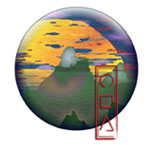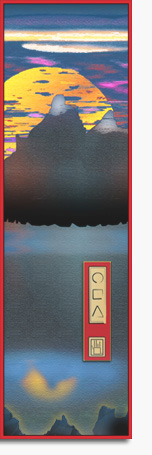On The Way: The Daily Zen Journal
Great Enlightenment
Dogen (1200-1252)
Right transmission of the Great Way is handed down through the experience and practice of enlightenment; it passes from Patriarch to Patriarch without alteration, and through them, Great Enlightenment manifests itself and never ceases.
But do not become attached to the idea of Great Enlightenment; if you do, your practice will stagnate. You must be completely detached from the notion of Great Enlightenment and never seek or crave it. Such expressions as “without enlightenment we will reach our final destination,” “think twice about enlightenment,” or “abandon enlightenment and walk freely” reveal that to attain freedom, we must transcend the concept of Great Enlightenment.
Great Enlightenment is the daily activity of the Buddhas and Patriarchs, but they never think about it. Their enlightenment controls time, includes time, and is controlled by time. This is the purpose of Great Enlightenment. Ordinary people cannot grasp this point because they are attached to many things, but Buddhas can open the gate to enlightenment with the key of complete freedom.

All the Buddhas have learned through Great Enlightenment to actualize the true meaning of enlightenment in everyday life. Nevertheless, Buddhas are detached from the idea of Great Enlightenment, and Great Enlightenment itself is not conscious of who is, or is not, a Buddha.
However, human beings have many different ways of realizing enlightenment. Some realize the meaning of life from birth and are detached in every stage of their life—beginning, middle, and end. Others achieve detachment by mastering the true meaning of study—that is, “self-study,” the study of one’s own skin, flesh, bones, and marrow. Some others learn as a Buddha; they do not possess understanding from birth or from self-study but gain it by transcending the world of opposites.
Still others gain self-knowledge without resorting to masters, sutras, or other means; their true nature manifests itself. Different types of people have different means of realization, and everyone possesses the ability to understand the true function and meaning of their own nature.
If everyone possesses the innate ability to have true knowledge of themselves, then we can say that they are already enlightened, have received the seal of enlightenment, and practice the Buddhist Way. Therefore, when Buddhas and Patriarchs are enlightened, they are simply returning to their original home: the original Buddha-nature.
To become a Buddha is to have the enlightenment of Buddha: dynamic, living enlightenment. This enlightenment exists innately; it is the original enlightenment that covers the three worlds, the hundred grasses, the four elements, the Buddhas and Patriarchs, koans. It is constantly growing and manifesting itself. So we can see that right now is the time for our own Great Enlightenment.
Delivered to the monks January 20, 1243 by Dogen
Excerpted from Shobogenzo Volume 1 – translated by Kosen Nishiyama and John Stevens, 1975 out of print and unavailable




“You must be completely detached from the notion of Great Enlightenment and never seek or crave it.”
The lovely paradox of right intention in practice….who is not mystified by Great Enlightenment? And yet we are advised, the more we seek it, the more elusive it becomes. So, out of the corner of our consciousness, we peek from time to time, wondering, even so, where exactly, and when is this Great Enlightenment? The maxim we hear in practice, “great effort, no goal” approximates the attitude of right intention. What a generous discourse on Great Enlightenment Dogen shares with us!
“All the Buddhas have learned through Great Enlightenment to actualize the true meaning of enlightenment in everyday life.”
There are more than a few hints of where to look, how to gently proceed without grasping too firmly. Akin to holding a rose with thorns, lightly, gently, we grasp and have the rose in our hands. Too much pressure and we are injured; too little and it falls from our grasp.
“Different types of people have different means of realization, and everyone possesses the ability to understand the true function and meaning of their own nature.”
This accounts for all the various teachings, some of which even seem to contradict prior teachings. Everyone has a different pathway into understanding. Sometimes it seems more helpful to be aware of the pitfalls in practice and leave whatever “progress” happens to itself. Even Socrates had a very clear version: “I know only one thing, that I know nothing.”
Once again, we are inspired, we continue to sit in the lap of the universe and become comfortable over time with nothing to hold onto.
Journeying forward,
Elana, Scribe for Daily Zen